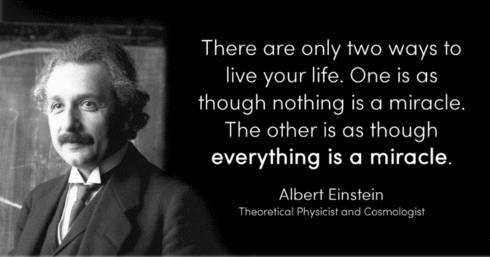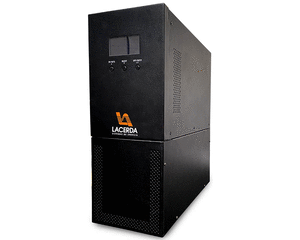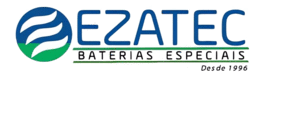No Blog Eletrônica de Potência você encontrará informações sobre teses,artigos,seminarios,congressos,tecnologias,cursos,sobre eletrônica potência. “TEMOS O DESTINO QUE MERECEMOS. O NOSSO DESTINO ESTA DE ACORDO COM OS NOSSOS MERITOS” ALBERT EINSTEIN. Imagination is more important than knowledge, for knowledge is limited while imagination embraces the entire world. EL FUTURO SE CONSTRUYE HOY,EL SUCESSO NO ES FRUTO DE LA CASUALIDAD,SE HUMILDE ,APRENDE SIEMPRE CADA DIA.
AUTOR DO BLOG ENG.ARMANDO CAVERO MIRANDA SÃO PAULO BRASIL

.gif)
“SE SEUS PROJETOS FOREM PARA UM ANO,SEMEIE O GRÂO.SE FOREM PARA DEZ ANOS,PLANTE UMA ÁRVORE.SE FOREM PARA CEM ANOS,EDUQUE O POVO.”
“Sixty years ago I knew everything; now I know nothing; education is a progressive discovery of our own ignorance. Will Durant”


https://picasion.com/


quinta-feira, 6 de novembro de 2014
Steady State and Dynamic Modeling of the Solar Cell and Evaluation on the Effects of Inverter Ripple Current KIM,WOOK Department of Electrical Engineering Graduate School Soongsil University
Steady State and Dynamic Modeling of the
Solar Cell and Evaluation on the Effects of
Inverter Ripple Current
KIM,WOOK
Department of Electrical Engineering
Graduate School
Soongsil University
ABSTRACT
In order to develop precise solar cell simulators or design a high
performance photovoltaic generation system, it is important to
accurately understand physical properties of solar cells. But the
steady state model of the solar cell have a non-linear form with
many parameters entangled and conventional methods suggested to
extract the parameters of the solar cell model require some kind of
assumptions, which accompanies the calculation errors, thereby
lowering the accuracy of the model.In the first half of the paper,a
novel method of extracting values of parameters is proposed.The
proposed method deduces characteristic curve of an ideal solar cell
using solar cell equation,and extracting the parameters from the
difference between the ideal and measured I-V curve.
LINK
https://copy.com/JklVLhChfBMQ20yf
quarta-feira, 5 de novembro de 2014
QUALIFICAÇÃO E ETIQUETAGEM DE INVERSORES PARA SISTEMAS FOTOVOLTAICOS CONECTADOS À REDE AIMÉ FLEURY DE CARVALHO PINTO NETO Programa de Pós-Graduação em Energia. Universidade de São Paulo. São Paulo, 2012
RESUMO
Pinto Neto, A. F. C. Qualificação e Etiquetagem de Inversores para Sistemas Fotovoltaicos Conectados à Rede. 2012. 141 p. Dissertação de Mestrado. Programa de Pós-Graduação em Energia. Universidade de São Paulo. São Paulo, 2012.
Este trabalho apresenta o desenvolvimento de uma metodologia para a etiquetagem e qualificação de inversores para Sistemas Fotovoltaicos Conectados à Rede, com finalidade de servir de proposta de procedimento para inclusão no Regulamento de Avaliação de Conformidade de Equipamentos e Sistemas Fotovoltaicos do Programa Brasileiro de Etiquetagem. O procedimento desenvolvido avalia os inversores quanto à eficiência, qualidade de energia, proteções e informações operacionais e de instalação.
LINK
http://lsf.iee.usp.br/lsf/pdf/mestrado/Mestrado_Aime_Fleury_Carvalho_Pinto.pdf
INVERSORES MONOFÁSICOS PARA CONEXÃO DE SISTEMAS FOTOVOLTAICOS À REDE FILIPE MARANGONI Universidade Tecnológica Federal do Paraná.
INVERSORES MONOFÁSICOS PARA CONEXÃO DE SISTEMAS
FOTOVOLTAICOS À REDE
FILIPE MARANGONI
Dissertação apresentada como requisito parcial
para obtenção do grau de Mestre em Engenharia
Elétrica, do Programa de Pós-Graduação em
Engenharia Elétrica da Universidade Tecnológica
Federal do Paraná. Área de concentração: Sistemas
e Processamento de Energia.
LINK
http://repositorio.utfpr.edu.br/jspui/bitstream/1/404/1/PB_PPGEE_M_Marangoni,%20Filipe_2012.pdf
A Single-Phase Current Source Solar Inverter with Constant Instantaneous Power, Improved Reliability, and Reduced-Size DC-Link Filter Bush, Craig R. (Author) ARIZONA STATE UNIVERSITY December 2013
A Single-Phase Current Source Solar Inverter with Constant Instantaneous Power, Improved Reliability, and Reduced-Size DC-Link Filter
by Craig R. Bush
A Dissertation Presented in Partial Fulfillment
of the Requirements for the Degree Doctor of Philosophy
Abstract
This dissertation presents a novel current source converter topology that is primarily intended for single-phase photovoltaic (PV) applications. In comparison with the existing PV inverter technology, the salient features of the proposed topology are: a) the low frequency (double of line frequency) ripple that is common to single-phase inverters is greatly reduced; b) the absence of low frequency ripple enables significantly reduced size pass components to achieve necessary DC-link stiffness and c) improved maximum power point tracking (MPPT) performance is readily achieved due to the tightened current ripple even with reduced-size passive components. The proposed topology does not utilize any electrolytic capacitors. Instead an inductor is used as the DC-link filter and reliable AC film capacitors are utilized for the filter and auxiliary capacitor. The proposed topology has a life expectancy on par with PV panels. The proposed modulation technique can be used for any current source inverter where an unbalanced three-phase operation is desires such as active filters and power controllers. The proposed topology is ready for the next phase of microgrid and power system controllers in that it accepts reactive power commands. This work presents the proposed topology and its working principle supported by with numerical verifications and hardware results. Conclusions and future work are also presented.
LINK ORIGINAL
http://repository.asu.edu/attachments/125815/content/Bush_asu_0010E_13372.pdf
terça-feira, 4 de novembro de 2014
Design of Inverter for LCD TV Backlight with Flat Fluorescent Lamp Jeongwook Hur Department of Electronic and Computer Engineering Graduate School Dankook University
Design of Inverter for LCD TV Backlight
with Flat Fluorescent Lamp
Jeongwook Hur
Department of Electronic and Computer Engineering
Graduate School
Dankook University
The liquid crystal display(LCD) TV market has been growing continuously and cost reduction is one of the biggest issues to increase its market share. The LCD needs backlight because it belongs to non emissive displays. The cold cathode fluorescent lamp (CCFL) and external electrode fluorescent lamp (EEFL) are widely used in backlight system for LCDs. But assembly of CCFL and EEFL backlight system is very complex. The flat fluorescent lamp (FFL) is a newly developed light source and it has a very simple structure. The LCD backlight can have a simple structure if the newly delvelop FFL is used as a light source. The backlight with FFL can be more cost effective than that of the backlights with CCFL or EEFL light sources. But the temperature behaviour of FFL backlights are different from the backlight with CCFL or EEFL light sources, which prohibits FFL backlight from being accepted as the backlight for commercial application.
LINK
https://copy.com/9MlzDr9PydAy1J1G
Assinar:
Postagens (Atom)







